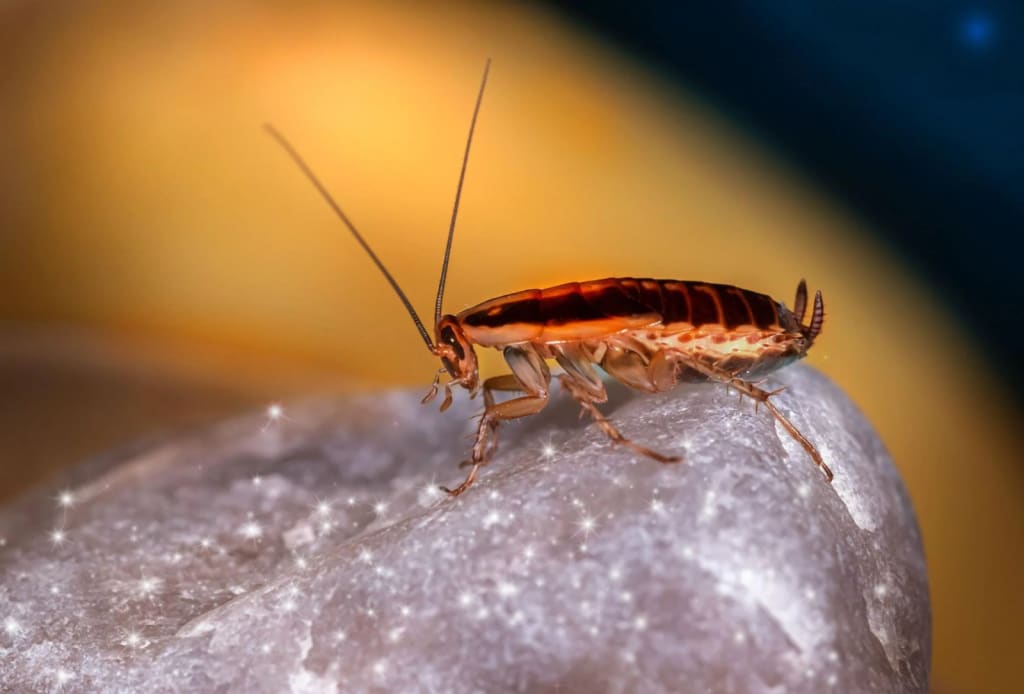Different Roach Species: Targeted Pest Control with Glue Traps
To effectively combat these pesky intruders, it's crucial to understand the differences between roach species and employ targeted roach pest control products.

Cockroaches are notorious pests that can invade homes, restaurants, and businesses, spreading diseases and causing significant distress. However, not all roach species are the same.
There are several common species of cockroaches, each with its unique characteristics and behaviors. To effectively combat these pesky intruders, it's crucial to understand the differences between roach species and employ targeted roach pest control products.
This article will discuss how glue traps can be an effective tool in dealing with specific roach species.
The Importance of Understanding Roach Species
Cockroaches come in many different shapes and sizes, and they exhibit varying behaviors and preferences. Understanding the differences between roach species is essential for effective pest control. Not all roaches infest the same areas, have the same dietary preferences, or respond to the same treatment methods. By identifying the specific species you are dealing with, you can tailor your approach to achieve better results while minimizing the use of harmful chemicals.
Common Roach Species
Several species of cockroaches are commonly found in and around human habitations. Let's take a look at a few of them and understand their unique characteristics:
German Cockroach (Blattella germanica):
- German cockroaches are small, light brown to tan in color.
- They are prolific breeders and can quickly establish infestations.
- German cockroaches prefer warm, humid environments and are often found in kitchens and bathrooms.
American Cockroach (Periplaneta americana):
- American cockroaches are larger, reddish-brown cockroaches.
- They prefer dark, damp areas and are often found in basements, sewers, and drains.
- Known for their ability to fly short distances.
Oriental Cockroach (Blatta orientalis):
- Oriental cockroaches are dark brown or black.
- They thrive in cool, damp environments and are often found in basements, crawl spaces, and sewers.
- Unlike some other species, they do not climb vertical surfaces.
Brown-banded Cockroach (Supella longipalpa):
- Brown-banded cockroaches are small and light brown.
- They prefer drier environments and are often found in bedrooms, living rooms, and closets.
- These roaches are known for their propensity to hide in furniture and electrical appliances.
Why Glue Traps for Targeted Pest Control?
Glue traps roaches are an excellent tool for targeted pest control, especially for specific roach species. They are non-toxic, easy to use, and can be strategically placed to capture roaches in their preferred habitats. Here's how glue traps work effectively against different roach species:
German Cockroach: Place glue traps in the kitchen, near appliances, and in areas with high humidity. German cockroaches are prolific crawlers, and glue traps can effectively capture them as they roam for food and water.
American Cockroach: These larger roaches are more likely to be found in basements and dark, damp areas. Placing glue traps along their common pathways can help intercept and control them.
Oriental Cockroach: Given their preference for cool, damp environments, glue traps can be positioned near floor drains, sewer lines, and basements to target Oriental cockroaches effectively.
Brown-banded Cockroach: These roaches tend to hide in cracks, crevices, and within furniture. Placing glue traps in these hiding spots can help catch them as they emerge to forage for food.
Tips for Effective Use of Glue Traps
When using glue traps for targeted pest control, keep the following tips in mind:
Strategic Placement: Identify the species you are dealing with and place the glue traps in areas where they are most likely to travel or hide.
Regular Monitoring: Check the glue traps regularly to assess the extent of the infestation and replace them as needed.
Maintain Cleanliness: Keep the area clean and free from food debris or water sources to make the traps more attractive to roaches.
Combine with Other Methods: While glue traps can be highly effective, consider using them in conjunction with other pest control methods for a comprehensive approach.
Conclusion
Understanding the different roach species and using roach pest control products accordingly is crucial for effective results. Glue traps are a valuable tool in targeted pest control, as they can be strategically placed to intercept roaches based on their habits and preferences.
By identifying the specific species and using appropriate glue traps, you can achieve higher success in your roach pest control efforts while minimizing the use of chemical pesticides.
Remember that pest control should always be approached with care and a commitment to maintaining a healthy, pest-free environment.






Comments
There are no comments for this story
Be the first to respond and start the conversation.